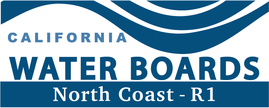Site Cleanup Unit
The North Coast Regional Water Quality Control Board Site Cleanup Unit implements the State Water Board contaminated site cleanup programs. These programs include the Site Cleanup Program, the Underground Storage Tank Cleanup Program, the Department of Defense Cleanup Program, and the Brownfields Program.
Sites enter these programs due to recent or historic discharges or suspected discharges of hazardous materials (for example, fuels or solvents) to the surface or subsurface, resulting in groundwater and soil contamination. Sites include industrial facilities, dry cleaners, lumber mills, underground and above ground petroleum storage tanks, accidental spills and leaks.
Information on these State Water Board programs can be found at the following links:
- Site Cleanup Program
- Underground Storage Tank Cleanup Program
- Department of Defense Cleanup Program
- Brownfields Program
The Regional Water Board is one of several regulatory agencies that oversee such cleanup work in our region. Others include: the California Department of Toxics Substances Control (DTSC), the U.S. Environmental Protection Agency, and local environmental health agencies.You can find information on sites overseen by DTSC by visiting EnviroStor.
According to the State Water Resources Control Board’s Resolution No. 92‑49 (As Amended on April 21, 1994 and October 2, 1996) “Policies and Procedures for Investigation and Cleanup and Abatement of Discharges Under Water Code Section 13304,” the cleanup goal for groundwater is to restore the groundwater to background conditions. If that is found to not be feasible, Water Quality Objectives, based on the Water Quality Control Plan for the North Coast Region (Basin Plan), are used. A guide for numerically interpreting narrative water quality goals can be found on the State Water Resources Control Board’s Water Quality Goals webpage.
Vapor intrusion, the migration of contaminant vapors from the subsurface up into structures, is a concern at many cleanup sites. Vapor intrusion can produce health risks for the building occupants. North Coast Regional Water Board staff utilize the Cal/EPA vapor intrusion guidance documents in directing the evaluation and mitigation of vapor intrusion. Those guidance documents are available on the Department of Toxic Substances Control’s (DTSC’s) website at https://dtsc.ca.gov/vapor-intrusion/.
In determining if contamination in soil and indoor air pose potential human health risks at a site, a human health risk assessment may be needed. The simplest human health risk assessment is to compare the contaminant concentrations to preliminary screening levels. North Coast Regional Water Board staff utilize DTSC’s “Human Health Risk Assessment Note 3 ‑ DTSC-Modified Screening Levels (DTSC-SLs)” (available at https://dtsc.ca.gov/human-health-risk-hero/) to determine preliminary screening levels for soil and indoor air. More detailed, site‑specific human health risk assessments may also be needed.Electronic Data Reporting
The State Water Board maintains GeoTracker, a web-based geographic information system (GIS) program that provides the public and regulators with online access to environmental data, including cleanup site data and documents. GeoTracker is available online at http://www.geotracker.waterboards.ca.gov. The State Water Board adopted regulations that require electronic submittal of information for groundwater cleanup programs (Title 23, CCR, Division 3, Chapter 30).
Cleanup Site Records Review
Regional Water Board site records comprise both a paper file and an electronic file. Beginning in 2005, select file material was uploaded to the State Water Resources Control Board’s GeoTracker website and is not necessarily included in the paper file. All new file material after 2014 is retained only electronically on the GeoTracker website. The paper file may be reviewed at the North Coast Regional Water Quality Control Board office from 8:00am to 5:00pm Monday through Friday. Appointments are recommended and can be arranged by calling (707) 576‑2220.
- General Waste Discharge Requirements Order No. R1-2004-0020 for Addition of Hydrogen Peroxide, Acid, and Iron Catalyst to Groundwater
- General Waste Discharge Requirements WDR R1-2004-0021 for in SITU Bioremediation of Petroleum Hydrocarbons by the Addition of Nutrients, Microorganisms, and/or an Oxygen Source to Groundwater and/or Soil
- General Waste Discharge Requirements WDR R1-2006-0107 For Addition Of Chemical Oxidants To Soils And/Or Groundwater
- General Waste Discharge Requirements WDR R1-2009-0105 For In Situ Soil And Groundwater Remediation For Volatile Organic Compound and/or Metal Impacted Sites Within The North Coast Region
- WDR Order Number R1-2016-0034 for Discharges of Highly Treated Groundwater to Surface waters following extraction and Treatment of Groundwater polluted with Petroleum hydrocarbons and Volatile organic compound.
- WDR Order 92-66 General Waste Discharge Requirements for Soil Bioremediation and/or aeration Activities
General Permits for Cleanup in the North Coast
Remediation projects conducted in the North Coast sometimes require discharges to land surface, surface water, soil, or groundwater and may require a Waste Discharge Permit. The following general permits have been developed for cleanups in the North Coast. Individual permits can be developed for sites where the general permit does not directly apply. Examples of individual permits can be found at Adopted Orders
Contacts
Site Cleanup Unit Chief
Heidi M. Bauer: 707-570-3769
Heidi.M.Bauer@waterboards.ca.gov
Program Resources
(Page last updated 8/29/23)
Water is a precious resource in California, and maintaining its quality is of utmost importance to safeguard the health of the public and the environment.
Statewide Campaigns
EPA Water Sense
File an Environmental Complaint
Save Our Water
Flex Alert
Register to Vote



